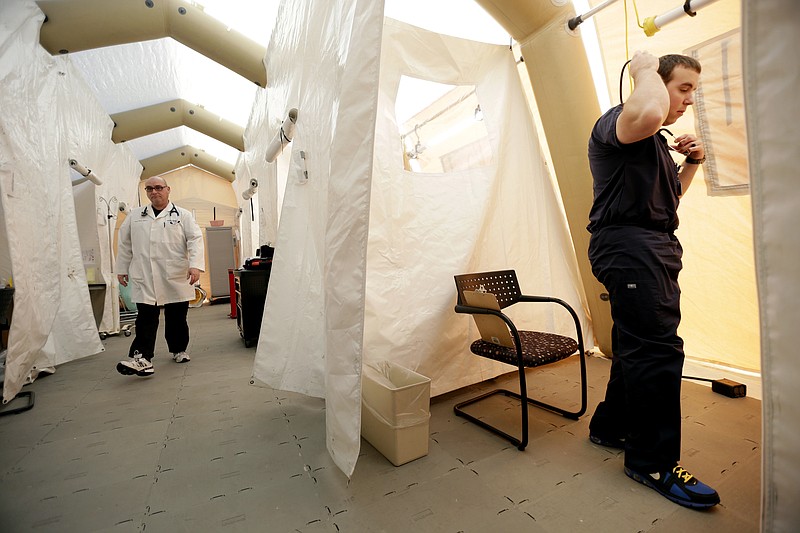From the Rocky Mountains to New England, hospitals are swamped with people with flu symptoms. Some medical centers are turning away visitors or making them wear face masks, and one Pennsylvania hospital set up a tent outside its ER to deal with the feverish patients.
Flu season in the U.S. has struck early and, in many places, hard.
While flu normally doesn't blanket the country until late January or February, it is already widespread in more than 40 states, with about 30 of them reporting some major hot spots. On Thursday, health officials blamed the flu for the deaths of 20 children so far.
Whether this will be considered a bad season by the time it has run its course in the spring remains to be seen.
"Those of us with gray hair have seen worse," said Dr. William Schaffner, a flu expert at Vanderbilt University in Nashville.
The evidence so far points to a moderate season, Schaffner and others say. It looks bad in part because last year was unusually mild and because the main strain of influenza circulating this year tends to make people sicker and really lay them low.
Also, the flu's early arrival coincided with spikes in a variety of other viruses, including a childhood malady that mimics flu and a new norovirus that causes vomiting and diarrhea, or what is commonly known as "stomach flu." So what people are calling the flu may, in fact, be something else.
Most people don't undergo lab tests to confirm flu, and the symptoms are so similar that it can be hard to distinguish flu from other viruses, or even a cold.
Flu is a major contributor, though, to what's going on.
"I'd say 75 percent," said Dr. Dan Surdam, head of the emergency department at Cheyenne Regional Medical Center, Wyoming's largest hospital. The 17-bed emergency room saw its busiest day ever last week, with 166 visitors.
The early onslaught has resulted in a spike in hospitalizations. To deal with the influx and protect other patients from getting sick, hospitals are restricting visits from children, requiring family members to wear masks and banning anyone with flu symptoms from maternity wards.
One hospital in Allentown, Pa., set up a tent this week for a steady stream of patients with flu symptoms. But so far "what we're seeing is a typical flu season," said Terry Burger, director of infection control and prevention for the hospital, Lehigh Valley Hospital-Cedar Crest.
On Wednesday, Boston declared a public health emergency, with the city's hospitals counting about 1,500 emergency room visits since December by people with flu-like symptoms.
All the flu activity has led some to question whether this year's flu shot is working. While health officials are still analyzing the vaccine, early indications are that it's about 60 percent effective, which is in line with what's been seen in other years.
The vaccine is reformulated each year, based on experts' best guess of which strains of the virus will be predominate. This year's vaccine is well-matched to what's going around. The government estimates that between a third and half of Americans have gotten the vaccine.

